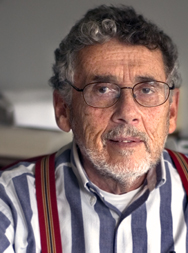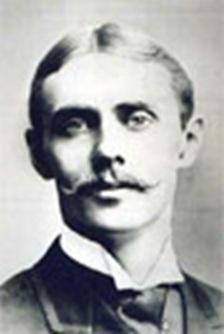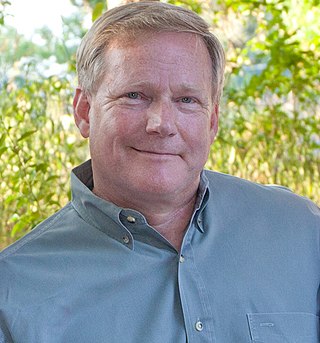Related Research Articles

James Bryant Conant was an American chemist, a transformative President of Harvard University, and the first U.S. Ambassador to West Germany. Conant obtained a Ph.D. in chemistry from Harvard in 1916.

Philip E. Eaton was an American chemist. He served as Professor Emeritus of Chemistry at the University of Chicago. Eaton and his fellow researchers were the first to synthesize the "impossible" cubane molecule in 1964.

John Ripley Myers was a co-founder of the pharmaceutical company Bristol-Myers.

Mary Lowe Good was an American inorganic chemist who worked academically, in industrial research and in government. Good contributed to the understanding of catalysts such as ruthenium which activate or speed up chemical reactions.
Samuel J. Danishefsky is an American chemist working as a professor at both Columbia University and the Memorial Sloan-Kettering Cancer Center in New York City.
Bruce Eliot Maryanoff FRSC is an American medicinal and organic chemist.

Richard Bruce Silverman is the Patrick G. Ryan/Aon Professor of Chemistry at Northwestern University. His group's main focus is basic and translational research into central nervous system disorders and cancer. He is known for the discovery of pregabalin, which is marketed by Pfizer under the brand name Lyrica.

Peter John Stang is a German American chemist and Distinguished Professor of chemistry at the University of Utah. He was the editor-in-chief of the Journal of the American Chemical Society from 2002 to 2020.
David R. Bryant is an internationally acclaimed organic chemist, having worked his entire thirty-nine-year 'early career' at Union Carbide. He is inventor on some ninety patents, and a recipient of the Perkin Medal. He currently is a member of Renewable Algal Energy (RAE) LLC, and is working to commercialize an algae-to-oil process utilizing RAE's patent pending technology.

MN-25 (UR-12) is a drug invented by Bristol-Myers Squibb, that acts as a reasonably selective agonist of peripheral cannabinoid receptors. It has moderate affinity for CB2 receptors with a Ki of 11 nM, but 22x lower affinity for the psychoactive CB1 receptors with a Ki of 245 nM. The indole 2-methyl derivative has the ratio of affinities reversed however, with a Ki of 8 nM at CB1 and 29 nM at CB2, which contrasts with the usual trend of 2-methyl derivatives having increased selectivity for CB2 (cf. JWH-018 vs JWH-007, JWH-081 vs JWH-098).
Dr. Joseph Fried was a Polish-American organic chemist, member of the National Academy of Sciences and the American Academy of Arts and Sciences. He held 200 patents on chemical compounds, with 43 listing him as the sole holder. He was a professor of chemistry and biochemistry at the University of Chicago. Fried discovered fluorohydrocortisone, a chemical used to treat adrenal disorders. He was also director of the organic chemistry at the Squibb Institute. His discoveries were instrumental to the creation of medications to treat inflammatory disorders including as arthritis, psoriasis, and various skin allergies. National Academies Press called him "an outstanding organic chemist who made very special contributions to the field of medicine". Professor Elias James Corey had this to say of Fried: "He was an outstanding, highly creative scientist who straddled both the worlds of pharmaceutical research and academic science. He was one of my heroes, and I've always thought of him as a model scientist of great character and great human warmth."

John Charles Martin was an American billionaire businessman, and the former executive chairman (2016–2018) and CEO (1996–2016) of the American biotechnology company Gilead Sciences. He joined Gilead Sciences in 1990 as vice president for research and development. Gilead is known for developing drugs such as Atripla and commercializing Sovaldi (sofosbuvir) for the treatment of the liver virus hepatitis C. Martin is the recipient of a number of awards, including the Biotechnology Heritage Award (2017).

Stephen C. Harrison is professor of biological chemistry and molecular pharmacology, professor of pediatrics, and director of the Center for Molecular and Cellular Dynamics of Harvard Medical School, head of the Laboratory of Molecular Medicine at Boston Children's Hospital, and investigator of the Howard Hughes Medical Institute.

BMS-906024 is a drug with a benzodiazepine structure, developed by Bristol-Myers Squibb and disclosed at the spring 2013 American Chemical Society meeting in New Orleans to treat breast, lung, colon cancers and leukemia. The drug works as a pan-Notch inhibitor. The structure is one of a set patented in 2012, and is being studied in clinical trials.

Herbert S. Eleuterio was an American industrial chemist noted for technical contributions to catalysis, polymerization, industrial research management, and science education. In particular, he discovered the olefin metathesis reaction and several novel fluoropolymers. Additionally, he explored techniques for research leadership, especially methods for fostering collaboration, globalization, and scientific creativity.

John L. Wood is a Robert A. Welch Distinguished Professor of Chemistry and Biochemistry; Cancer Prevention Research Institute of Texas Scholar; and Associate Editor for the Americas, Tetrahedron Letters at Baylor University.
Ruth Wexler is an American industrial chemist best known as a co-discoverer of apixaban, a marketed anticoagulant; and losartan, a blood pressure treatment.

BMS-F is a chemical from the aminoalkylindole family invented by Bristol-Myers Squibb around 1999, that acts as a potent and selective agonist for the cannabinoid receptor CB2, with a Ki of 8 nM at CB2 and 500x selectivity over the related CB1 receptor. It has antiinflammatory effects and inhibits release of TNF-α.
References
- 1 2 3 Traynham, James G. (October 28, 2002). Paul S. Anderson, Transcript of an Interview Conducted by James G. Traynham at Bristol-Myers Squibb Wilmington, Delaware on 28 October 2002 (PDF). Philadelphia, PA: Chemical Heritage Foundation.
- ↑ "Of Learning and Life". The University of Vermont Foundation. Retrieved 11 December 2014.
- ↑ "The E. B. Hershberg Award for Important Discoveries in Medicinally Active Substances". ACS Division of Medicinal Chemistry. Retrieved 9 December 2014.
- ↑ "E. B. Hershberg Award for Important Discoveries in Medicinally Active Substances". American Chemical Society. Retrieved 9 December 2014.
- ↑ Thayer, Ann (June 13, 2005). "Paul Anderson is Priestley Medalist". Chemical & Engineering News. 83 (24): 5. doi:10.1021/cen-v083n024.p005 . Retrieved 9 December 2014.
- 1 2 "Paul Anderson Profile". Forbes. Archived from the original on December 10, 2014. Retrieved 9 December 2014.
- ↑ "Paul S. Anderson" (PDF). Department of Medicinal Chemistry. University of Kansas. Retrieved 9 December 2014.